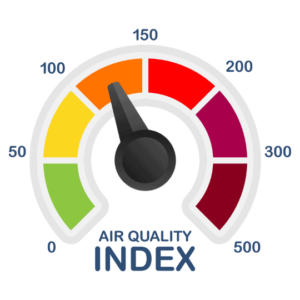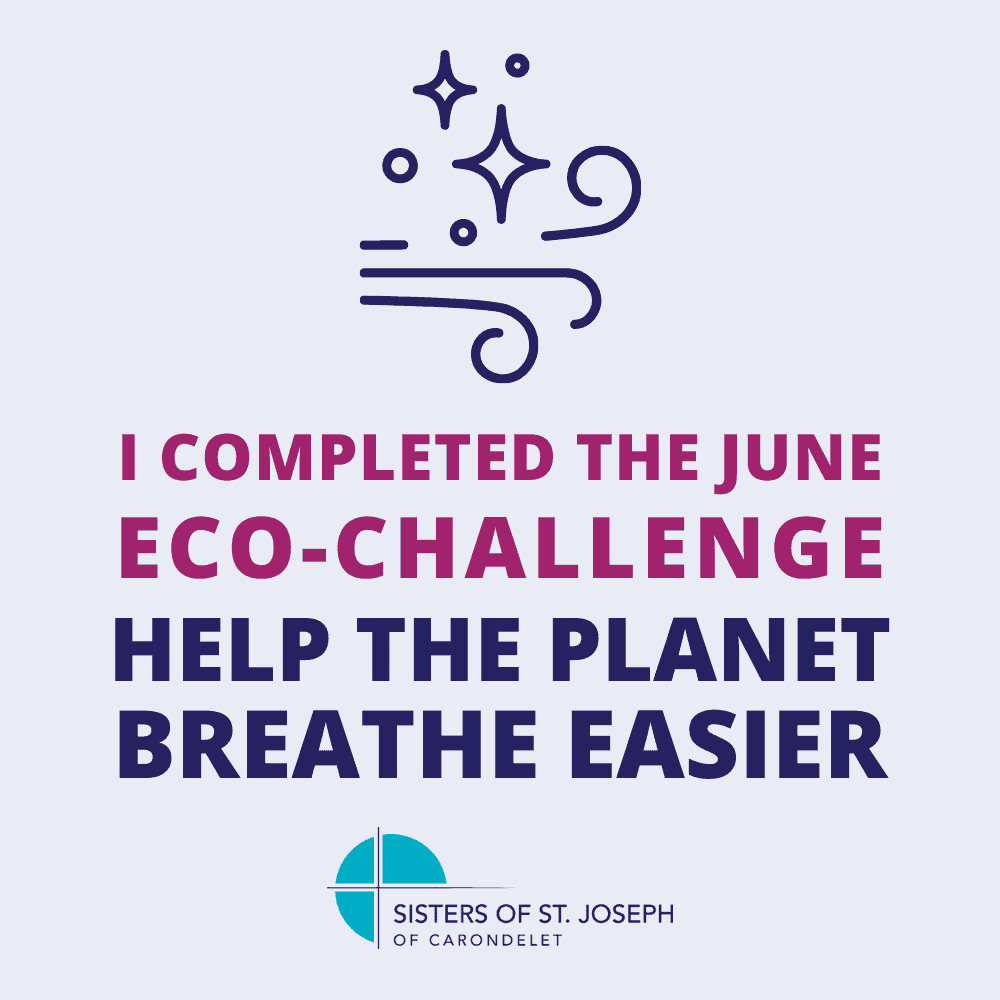
As part of our commitment to Earth via our Laudato Si’ Action Plan, we are inviting everyone who shares in our charism to take a monthly Eco-Challenge with us.
What is good air?
Air is the invisible mixture of gases that surrounds the Earth. Air contains important substances, such as oxygen and nitrogen that most species need to survive. Outdoors on a clear breezy day, the air smells fresh and clean. Clean air has no harmful levels of pollutants (dirt and chemicals) in it. Clean air is good for people to breathe.

Air Quality Index

Today, we have access to the Air Quality Index (AQI) to help us determine how healthy our air is on a day-to-day basis. Think of the AQI as a yardstick that runs from 0 to 500. The higher the AQI value, the greater the level of air pollution and the greater the health concern. For example, an AQI value of 50 or below represents good air quality, while an AQI value over 300 represents hazardous air quality. You can use phone apps like Breezometer or AirVisiual to monitor real-time air quality in your area or the website below.
Polluted Air
While air pollution cannot always be seen, pungent-smelling chemicals (such as hydrogen sulfide or ammonia) may alert you to its presence. The main causes of air pollution can be categorized by source:
- Mobile: Cars, buses, planes, trucks and trains.
- Stationary: Power plants, oil refineries, industrial facilities and factories.
- Area: Agricultural areas, cities and wood-burning fireplaces
While carbon dioxide (CO2) is the primary concern in our atmosphere, methane gas is the second-largest contributor to the climate crisis. On a pound-for-pound basis, methane traps 86 times more heat than carbon dioxide, making it far more potent and dangerous to our climate. The good news is that methane gases do not cling to the Earth to the same degree as CO2, so reducing methane emissions today can actually have a positive effect, more so than other greenhouse gases.
Another concerning factor for air quality is the presence of ozone (O3), a gas composed of three atoms of oxygen. Ozone occurs both in the Earth’s upper atmosphere and at ground level. Ozone can be good or bad, depending on where it is found. Good ozone occurs naturally in the upper atmosphere, where it forms a protective layer that shields us from the sun’s harmful ultraviolet rays. Ozone at ground level is a harmful air pollutant. Elevated exposures to ozone can affect sensitive vegetation, animals and ecosystems.
Who is most affected by air pollution?
Studies show that people with lower socioeconomic status and minority populations are disproportionately exposed to air pollution and more vulnerable to adverse health effects. Populations that are at a higher risk of health problems due to air pollution are:
- Infants and young children
- Adults aged 65 years or older
- People who:
- Have lung diseases, such as asthma, chronic bronchitis, emphysema and COPD
- Have cardiovascular diseases
- Live in poorer areas
- Lack access to health care
- Work or exercise outdoors
- Are exposed to contaminated air at the workplace
- Spend a lot of time near busy roadways
- Smoke or are exposed to secondhand smoke
Take the Eco-Challenge
In June, ask yourself: What can I do to help reduce air pollution? Choose from the activities below or come up with another action.
Spread the word
- Choose your challenge level above
- Share your commitment in the comments section below.
- Claim your June Eco-Challenge badge by sharing our post on Facebook, Instagram and/or Twitter.
